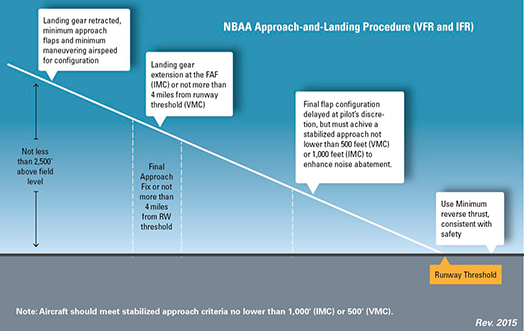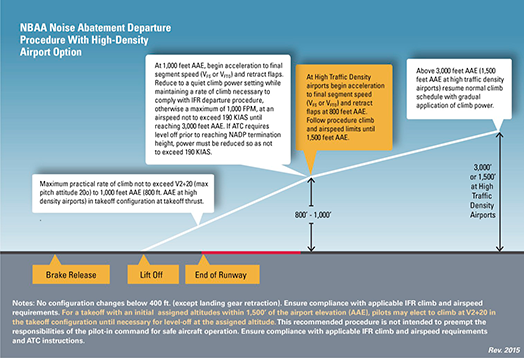San Luis County Rgnl Airport
San Luis Obispo, California, United States
Noise Abatement Information - Last update 05/22/2014
Overview
SAFETY ALWAYS SUPERSEDES NOISE ABATEMENT PROCEDURES!
San Luis Obispo County Regional Airport is surrounded by noise
sensitive areas. The procedures outlined in this guide were prepared by local pilots in an effort to reduce the noise impact on our neighbors.
Images / Diagrams
Runway 29 | All Aircraft Categories | Departure Only
Runway 29 Departure Guide

Runway 11 | All Aircraft Categories | Departure Only
Runway 11 Departure Guide

All Runways | All Aircraft Categories | Arrival & Departure
Noise Sensitive Area Map

San Luis Obispo County Regional Airport

Departures
Runway 29 | All Aircraft Categories | Departure Only
Left Downwind Departure: No left turns prior to reaching departure end of runway. Make maximum rate of climb. Complete left crosswind turn prior to reaching South Higuera Street.
Left Crosswind Departure: Make maximum rate of climb. Complete left turn prior to reaching South Higuera Street; or, maintain runway heading (290°) and execute turn after reaching highway 101 but prior to reaching Laguna Lake residential area; or, maintain runway heading (290°) and delay left turn until past Laguna Lake area.
Right Downwind Departure Make maximum rate of climb. No right turns prior to reaching Tank Farm. Execute right crosswind turn prior to reaching water tank on ridge line.
Right Crosswind Departure: Make maximum rate of climb, maintain runway heading(290°), and reach highway 101 prior to executing turn.
Runway 11 | All Aircraft Categories | Departure Only
PREFERRED DEPARTURES RUNWAY 11
Right Downwind Departure: Maintain runway heading (110°) and climb to pattern altitude prior to executing turn. AVOID OVERFLIGHT OF ELEMENTARY SCHOOL UNDER RIGHT CROSSWIND.
Right Crosswind Departures: Maintain runway heading (110°), make maximum rate of climb and delay right turn until past elementary school and residential area.
Engine Runup
LARGE TWIN PISTION, TURBO PROP AND TURBOJET ENGINE AIRCRAFT RUNUP
Due their size, these type of aircraft have a greater potential for negative impacts on aircraft operations as well as neighbors in close proximity to the Airport. Suitable locations on the airport for engine run-ups are limited in availability.
There are two locations, a primary and secondary, available for engine maintenance run-up operations.
The primary location, to be used in most circumstances, is the northwest end of taxiway A adjacent to the approach end of runway 11. The aircraft should be facing the southeast to allow prop wash/jet blast to be directed to the northwest, away from other aircraft and structures. This location allows for a maximum separation from residential areas around the airport resulting in reduced impact from noise and fumes.
The secondary location is the run-up area for runway 29 at the southeast end of Taxiway A. Airport Management must give approval prior to conducting engine maintenance at this location.
Flight Training
TOUCH AND GOES
Minimize power/RPM and avoid engine power setting changes on base to final.
AVOID OVERFLIGHT OF ELEMENTARY SCHOOL.
When Tower is in operation, consider varying left and right traffic for runway 11-29, or use of runway 7-25 when winds permit, to avoid repetitive overflight of same area.
Runway 29 – No turns before reaching departure end of runway, make crosswind turns over the tank farm area and maintain pattern altitude on downwind.
Runway 11 – Maintain runway heading; reach pattern altitude prior to turning right crosswind.
Helicopter Operations
All Runways | Aircraft Category HELI | Arrival Only
HELICOPTER LANDING
To minimize blowing grass and other FOD, landing and hover operations must occur on or over paved areas only. Unpaved areas should be avoided unless an emergency exists.
Landing and low approach over the parallel taxiway “A” between taxiway “G” and the runway 29 run-up area is prohibited. Helicopters may be advised to approach and land directly on the East parking ramp and/or R.O.N. apron. Over flight of parked aircraft and buildings should be avoided.
If a direct approach to the apron is not feasible, aircraft must approach and land/hover taxi on the runway and then proceed to parking over a paved surface.
All Runways | Aircraft Category HELI | Departure Only
HELICOPTER TAKEOFF
Takeoff operations must occur on or over paved movement areas only. To minimize blowing grass and other FOD, hovering over or taking off from unpaved areas should be avoided unless an emergency exists.
All Runways | Aircraft Category HELI | Arrival & Departure
HELICOPTER TRAINING
Helicopter operations will be conducted in designated areas only and shall avoid residential overflight.
Pattern Work
Due to the noise characteristics of helicopters, and sensitivity of the community, helicopters performing pattern work such as touch and go or auto rotation operations should be directed to operate in the pre-designated helicopter training pattern. This is either right hand pattern for runway 29 or left hand pattern for runway 11. Every effort must be taken to avoid residential over flight while in this pattern. Helicopters should stay south of Tank Farm Road and West of Broad Street until reaching an area abeam the Airport fire station before heading east.
Hover Practice
Hover operations should only be performed when departing or approaching a designated parking area. Hover training may be
performed over runway 7/25. When using runway 7/25, hover operations should be concentrated as close to the 25 end of the runway as possible provided it does not interfere with other aircraft operations on the airport.
Aircraft Category HELI
HELICOPTER PARKING
Based Aircraft
Helicopters based at SBP may be directed to hover taxi to and from an open ramp space nearest to their hangar or assigned tie down. Helicopters must not hover close to or in between buildings or other fixed structures. Main rotor blade tips should be no closer than 50 feet from any structures while in motion.
Transient Aircraft
Helicopters not based at SBP should be directed to park on the R.O.N. apron. Given the size of the apron, this area can accommodate multiple aircraft. In the event the R.O.N. apron does not have sufficient room, additional parking may be available between the fire station and Coastal Air Maintenance. Parking at the base of the air traffic control tower should be the last resort for this type of use. Overnight parking at the base of the tower must be coordinated with Airport Management. Helicopters may hover taxi to the San Luis Jet Center parking apron on the East side of the Air Traffic Control Tower provided a marshaller is present and there is sufficient room between the ATCT and any aircraft parked to the East of the tower so as not to create an unsafe condition.
Medical Aircraft
Emergency medical aircraft arrivals and departures can be frequent and unexpected. Ambulance units meeting the aircraft will typically arrive and depart through the gate near the fire station. However, access may also be obtained through the pedestrian gate from the rental car parking lot. Depending on the level of urgency, and at the pilot’s discretion, the aircraft may be parked at the base of the air traffic control tower or on or near the R.O.N. apron.
Airport Contact Info
| Name: | Kevin Bumen, Airport Manager |
|---|---|
| Phone: | 805-781-5205 |
| Noise Hotline: | 805-781-5898 |
| Fax: | 805-781-5985 |
| Email: | staff@sloairport.com |
| Web Address: | http://www.sloairport.com |
| Address: | 903-5 Airport Drive San Luis Obispo CA 93401 |
NBAA Procedures
AOPA Noise Awareness Steps (Not Applicable)
Not applicable.
Temporary Information (None)
None
Mandatory Restrictions (None)
None
Curfews (None)
None
Arrivals (Not Specified)
Not specified
Preferential Runways (No Preference)
No preference
Preferential Instrument Procedures (None)
None
Reverse Thrust (No Restrictions)
No restrictions
Pattern Altitudes (None Specified. Refer to FAA A/FD.)
None specified. refer to faa a/fd.
Intersection Takeoffs (No Restrictions)
No restrictions
APU Use (No Restrictions)
No restrictions
Community Groups/Info (None)
None
Stage II (No Restrictions)
No restrictions
Stage III (No Restrictions)
No restrictions
Flight Track Monitoring (None)
None
Noise Ordinance (None)
None
Noise Monitoring (None)
None
Prior Permission (PPR) Operations (None)
None
Airport Maps
Airport Contact
| Name: | Kevin Bumen, Airport Manager |
|---|---|
| Phone: | 805-781-5205 |
| Noise: | 805-781-5898 |
| Fax: | 805-781-5985 |
| Address: |
903-5 Airport Drive San Luis Obispo CA 93401 |
Weather Data

Loading Most Current Data...
Airport Data
| Elevation: | 212 ft |
|---|---|
| City: | San Luis Obispo, California, United States |
| Sectional Chart: | Los Angeles |
| Flight Service: | Hawthorne FSS |
| Control Tower: | Yes |
| Wind Indicator: | Yes |
| Fuel: | 100LLA |





